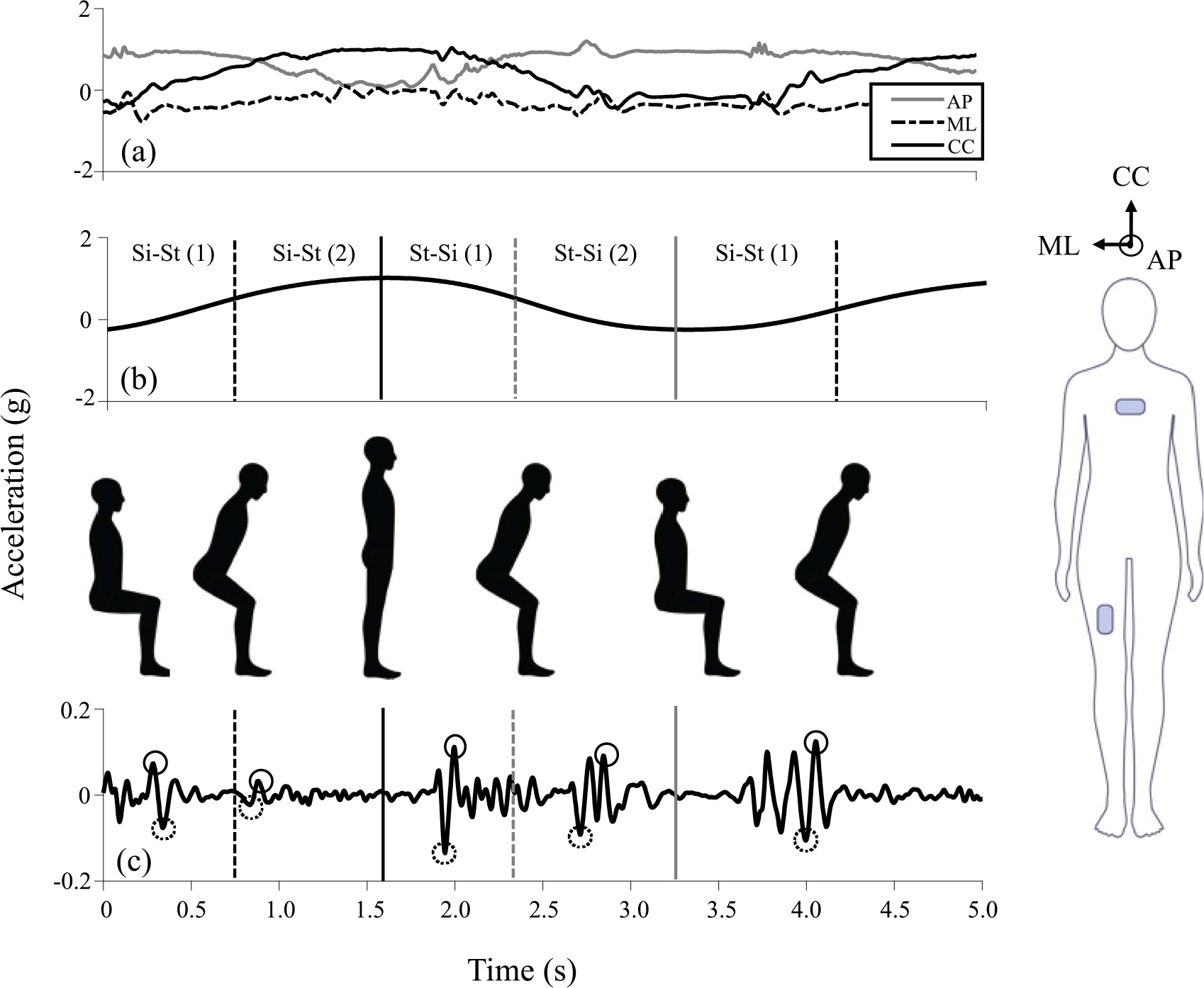Fig. 1.

Overview of algorithm for delineating phases of the 30CST and extracting performance metrics. Triaxial accelerometer data were approximately aligned with the anterior-posterior (AP), cranial-caudal (CC), and medial-lateral (ML) directions (a) using the participant specific static standing pose (right) and direction of gravity. The CC component was low pass filtered and sit (minimum values, gray solid line), stand (maximum values, black solid line) and mid-transition (inflection points, dotted lines) events were identified to create four regions of interest (b). The triaxial raw accelerometer signal was bandpass filtered (c) and used to extract peak (solid circles) and minimum values (dotted circles) for all components for the chest and thigh.
